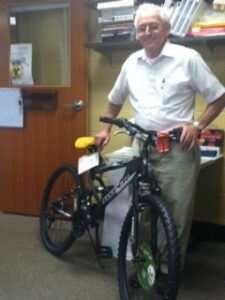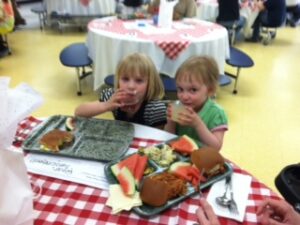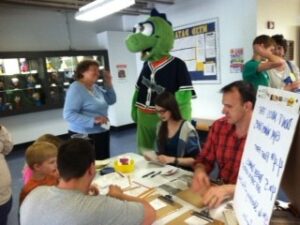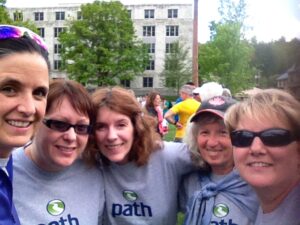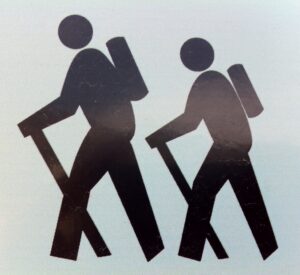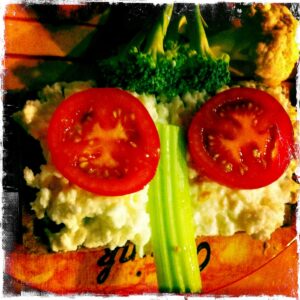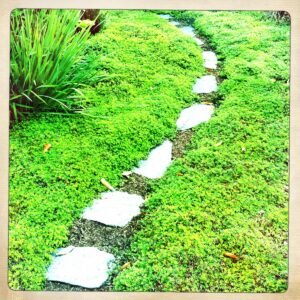“It’s official, my name is now ‘Summer.'”

That’s what one teacher-friend says as soon as classroom instruction ends each year. She still has some outings and in-service trainings but by and large her year is winding down. It’s great to celebrate early and often!
We who work year-round sometimes get that knee-jerk twinge of jealousy when teachers begin to count down the days.
If ever I begin to feel as such I am reminded of the incredible work schools accomplish each year, and the off-season polishing that rarely gets acknowledged by the occasional green-eyed tax payer. Every so often I run into someone who finds out we work with schools and is thus immediately compelled to spout off frustrations about every teacher’s seemingly cushy ride.
“Their days are short and they have summers off.” Indeed, that seems nice. But it’s not reality and those who really care about children know the difference.
Let’s take a closer look at cushy…
My friend who changes her name to Summer (and others I am close to who teach), has been called a [blankety-blank] skank, a whore, and several other epithets by her students, has been physically threatened and shoved by parents, has literally been shot at by the jealous boyfriend of a co-worker, has been thrown up on, has been given whooping cough, hepatitis and other lovely communicable joys, has held students who sob for the suicidal loss of a best friend, and has been harangued by state officials for lack of certain meaningless trainings. And the list goes on. But this is what they willfully signed up for and don’t blink an eye toward. The only time any of it gets to them is when the word cushy surfaces or summer resentment flies.
For 17 years I’ve worked with Vermont school employees. As with any profession or group of people certainly there are a few thorns out there. The bulk of the lot, however, is doing powerful good: shaping our future, nurturing our most prized possession. Not only do they hold the lives of our children and families in their hearts and souls for several hours a day over two thirds of the year, they are community members, tax payers, customers, parents and friends.
 Meetings, paperwork, follow-up phones calls, and re-licensure work bring them in before and keep them after school. Grading, lesson plans, and parent conversations happen well into their home evening time.
Meetings, paperwork, follow-up phones calls, and re-licensure work bring them in before and keep them after school. Grading, lesson plans, and parent conversations happen well into their home evening time.
And it’s not just the teachers. There are the food service people who feed our children so they are primed to learn. There is the maintenance crew who keep our buildings safe and functional (and do work year-round). Remember your school’s custodian? Himme Goffee was ours. He always had a smile. Turns out he was a tortured Vietnam Vet. He loved us and quietly healed in his time with us. We never knew until long after he was gone. And what about the front office team, or the nurses? Every day we meet these extraordinary people who literally cradle our children, and each other, so all can learn and grow at their best.
They do it all under the roof of shrinking budgets, dwindling resources, straining facilities, and the critical watch-dog attitude of the public.
Let’s face it. Kids are hard. Honestly. They are a gift, they are amazing, they are precious. And they are hard. Parents of kids are hard. Bureaucrats, red tape and paperwork are hard. Being an expert in all that makes a child blossom into happy adulthood today is a 24/7, 365 endeavor.
We simply cannot pay them enough. In fact, those who get a child to graduate with skills and self-esteem save our communities $250,000 in services down the road.
News flash: they don’t do it for the riches anyway. Show me a teacher with a BMW and I’ll show you his or her trust fund or cash-cow spouse. By most accounts, on average, half of all school employees have a second job. Summer is not all play and games for them either. Getting caught up on professional development, required certifications, and other trainings take up weeks on end. And then there is that curriculum they must plan because there won’t be time in a regular school week to do so. Not to mention the summer job many must take on. They are the multi-tasking gladiators of our time along with mental health and human service providers; each sloughing off direct or vicarious trauma, compassion fatigue and burnout like a snake sloughs skin.
As you can see, I have an opinion about this. I don’t apologize for being in love with this small army of talented foot soldiers in the battle to build a better world.
So this week, we thank you, VEHI members, for your dedication to Vermont families and communities. We salute the hard work you do for all of us and send blessings for a safe, productive and healthy summer.
Summer it is and summer it should be!
OH! By the way… Don’t miss the VEHI PATH Sizzlin’ Summer Challenge which starts July 1. Look in the mail and on your dashboard for more info.
Take care and we’ll see you on the PATH Ahead.
Gillian and the VEHI PATH Team.

